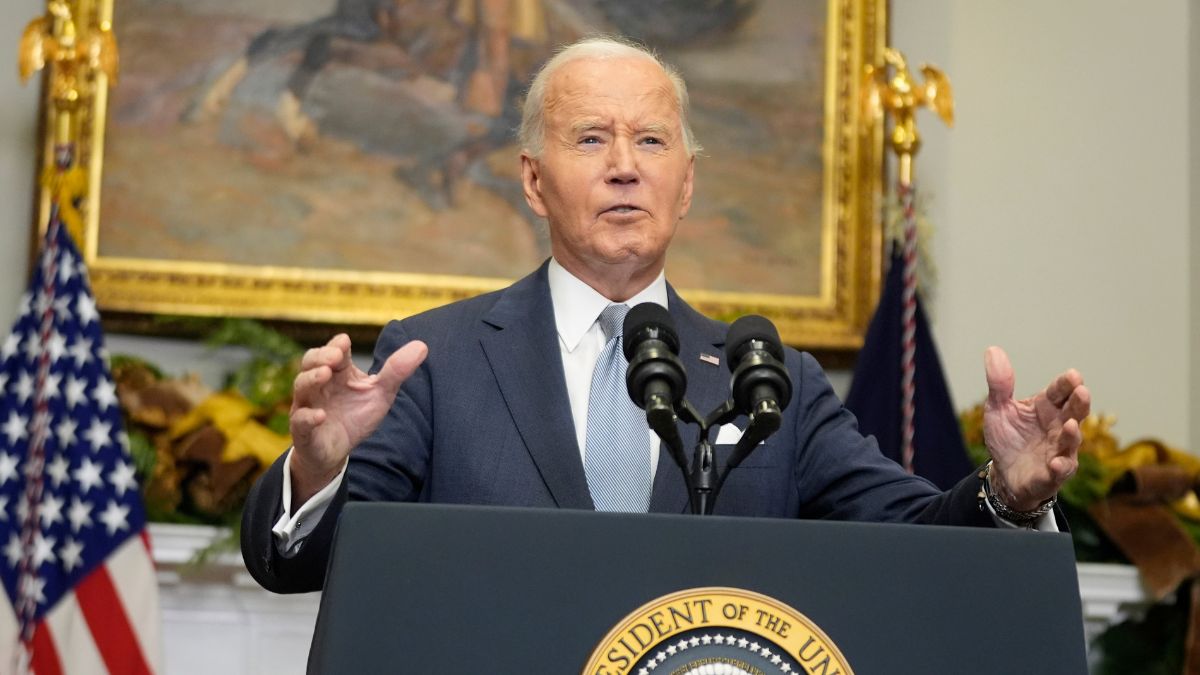Massive US airstrikes on Islamic State (IS) militants in Syria were aimed at sending a clear message to the group and preventing it from exploiting the chaos following the overthrow of President Bashar Assad’s government.
The US, alongside its partners, is intent on ensuring that IS, which still maintains a presence in Syria, cannot seize the leadership void and regain control over significant parts of the country, Pentagon spokeswoman Sabrina Singh explained on Monday.
On Sunday, the US conducted airstrikes on approximately 75 IS targets in the Syrian desert.
For the past decade, US forces have been stationed in Syria to combat IS. The recent turmoil following the rebel offensive that led to Assad’s ousting has heightened concerns about a potential IS resurgence.
“ISIS will try to use this period to reestablish its capabilities, to create safe havens,” US Secretary of State Antony Blinken said on Monday, using another acronym for the group. “As our precision strikes over the weekend demonstrate, we are determined not to let that happen.”
At present, US officials state that they do not intend to increase American troop numbers in Syria but remain focused on safeguarding those already deployed.
What is the US military presence in Syria?
The US maintains around 900 troops in Syria, along with an undisclosed number of contractors, primarily stationed at small bases in the north and east. A limited number of forces are also positioned at the al-Tanf garrison near the Iraq and Jordan borders.
In addition to the official count, US special operations forces frequently operate in and out of Syria in small teams.
In 2014, IS militants captured vast areas of Iraq and Syria, declaring a caliphate. The US led a coalition that defeated IS in Iraq by 2017. In Syria, the US partnered with the Kurdish-led Syrian Democratic Forces (SDF), eventually bringing an end to the caliphate in 2019 after intense battles.
Despite these victories, IS remnants persist, including approximately 10,000 fighters detained in SDF-run facilities in Syria and tens of thousands of family members residing in refugee camps. Over the past year, IS fighters have intensified their activity, including attacks on US and Kurdish forces.
Syria continues to face widespread violence and competing foreign interests. Russia maintains a naval port in the north, and while its forces in the area have diminished since the war in Ukraine began, the US uses a deconfliction hotline with Moscow to prevent miscalculations.
Also Read | US urges Syrian rebel group to form inclusive government
Meanwhile, Iran has established a significant presence in Syria, using it as a corridor for transferring weapons to Hezbollah in Lebanon.
The al-Tanf garrison, situated on a strategic route linking Iran-backed forces from Tehran to southern Lebanon and Israel, allows US forces to disrupt such movements.
Why is the US striking Islamic State targets?
Over the past decade, the US has consistently targeted IS leaders, camps, and weapons to prevent the group from regrouping.
Recent months have seen an uptick in attacks by Iran-backed militias in Iraq and Syria, as well as by IS fighters, particularly as the Israel-Hamas conflict has escalated into a broader regional confrontation involving Hezbollah in Lebanon.
To counter these threats, the US has maintained a steady pace of strikes against various groups, including IS. On Sunday, the US launched one of its largest operations in recent years, striking at least 75 targets across five locations in the desert. B-52 bombers, A-10 attack aircraft, and F-15 fighter jets were deployed in the operation.
“Does it send a message? I mean, I think it absolutely sends a message that we use B-52s, A-10s, and F-15s,” Singh told reporters, though she did not provide further details on the results of the strikes.
What lies ahead for the US in Syria?
The Biden administration has reiterated that the US will not involve itself in Syria’s internal conflict or the efforts to replace the Assad government. However, the US and its allies remain deeply invested in defeating IS, disrupting Iran-backed forces, and containing other terror groups such as al-Qaida remnants.
“I think it is a harbinger of more instability and the potential for more political violence,” said Chris Costa, a former senior counterterrorism director in the Trump administration, speaking before the fall of Damascus. Costa, who served decades in the US Army, highlighted the potential for IS to create further instability in the region.
Alex Younger, former head of Britain’s MI6 from 2014 to 2020, expressed concern over the thousands of IS detainees still held in SDF-controlled areas. “They are currently contained by the Kurdish groups in the east, but if they go off the job, you can expect a serious spike in the threat posed to Europe by ISIS,” Younger warned in an interview with the BBC.
Who will govern Syria?
A major challenge is determining who will lead Syria in the aftermath of Assad’s ousting. The opposition forces that captured Damascus and forced Assad to flee to Russia are primarily led by Hayat Tahrir al-Sham (HTS), a group that originally aligned with al-Qaida but later severed ties. The US and the United Nations classify HTS as a foreign terrorist organisation.
HTS leader Ahmad al-Sharaa, also known as Abu Mohammed al-Golani, has sought to portray the group as more moderate in an effort to gain local and international acceptance. US officials remain cautious, opting for a wait-and-see approach.
“While HTS was the vanguard, they aren’t the only opposition group involved,” White House national security spokesman John Kirby told CNN on Monday. He highlighted the importance of coordination among various opposition factions and through channels such as the United Nations.
Although Singh stated there is no formal US communication channel with HTS, she noted, “We have other ways of getting messages through, you know, groups and other allies in the region.”
With inputs from AP


)

)
)
)
)
)
)
)
)



